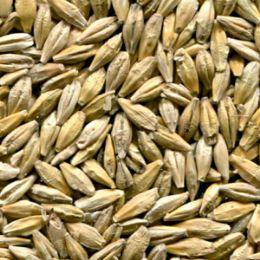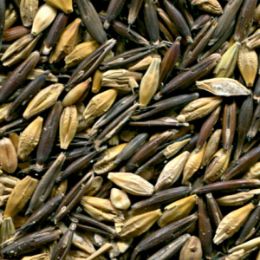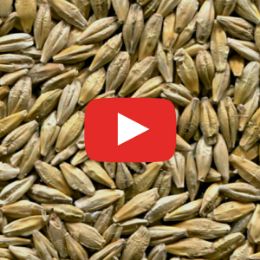Result of barley cleaning
from impurities with color sorter
Barley (Hordeum vulgare), a member of the grass family, is a major cereal grain grown in temperate climates globally. Barley has been used as animal fodder, as a source of fermentable material for beer and certain distilled beverages, and as a component of various health foods. It is used in soups and stews, and in barley bread of various cultures. Barley grains are commonly made into malt in a traditional and ancient method of preparation.
Barley is a widely adaptable crop. It is currently popular in temperate areas where it is grown as a summer crop and tropical areas where it is sown as a winter crop. Its germination time is one to three days. Barley grows under cool conditions, but is not particularly winter hardy.
Barley is more tolerant of soil salinity than wheat, which might explain the increase of barley cultivation in Mesopotamia from the second millennium BCE onwards. Barley is not as cold tolerant as the winter wheats (Triticum aestivum), fall rye (Secale cereale) or winter triticale (× Triticosecale Wittm. ex A. Camus.), but may be sown as a winter crop in warmer areas of Australia and Great Britain.
Barley has a short growing season and is also relatively drought tolerant.In 2017, barley was ranked fourth among grains in quantity produced (149 million tonnes or 330 billion pounds) behind maize, rice and wheat.
In a 100-gram reference serving, cooked barley provides 515 kilojoules (123 kcal) of food energy and is a good source (10% or more of the Daily Value, DV) of essential nutrients, including, dietary fiber, the B vitamin, niacin (14% DV), and dietary minerals including iron (10% DV) and manganese (12% DV).
Barley is known or likely to be susceptible to barley mild mosaic bymovirus, as well as bacterial blight. Barley yellow dwarf virus, vectored by the rice root aphid, can also cause serious crop injury. It can be susceptible to many diseases, but plant breeders have been working hard to incorporate resistance. The devastation caused by any one disease will depend upon the susceptibility of the variety being grown and the environmental conditions during disease development. Serious diseases of barley include powdery mildew caused by Blumeria graminis f.sp. hordei, leaf scald caused by Rhynchosporium secalis, barley rust caused by Puccinia hordei, crown rust caused by Puccinia coronata, and various diseases caused by Cochliobolus sativus. Barley is also susceptible to head blight.
In 2017, world production of barley was 149 million tonnes, led by Russia producing 14% of the world total. Australia, Germany, France, and Ukraine were major producers.
Barley for cereals should be fresh without any smell. There should be low level of spoiled grains — 0.3% max, harmful impurities — 0.2%, corncockles — 0.3% max, mineral impurities — 0.2%.
Barley kernels are also uniquely suited for brewing because their structure and enzyme levels can quickly and easily break down starches into fermentable sugars. It is very important to clean barley grains before brewing.
Percentage of bad grains should be 7% max. Bad grains are damaged and eaten by pests grains.
Conteminants: stones, ore particles, pebble; Tatary buckwheat, wild oats, sunflower seeds, wheat; grains affected by ergot; spoiled barley.
Color sorting of barley gives 99.9% of cleanliness.
Color sorters
for barley cleaning



